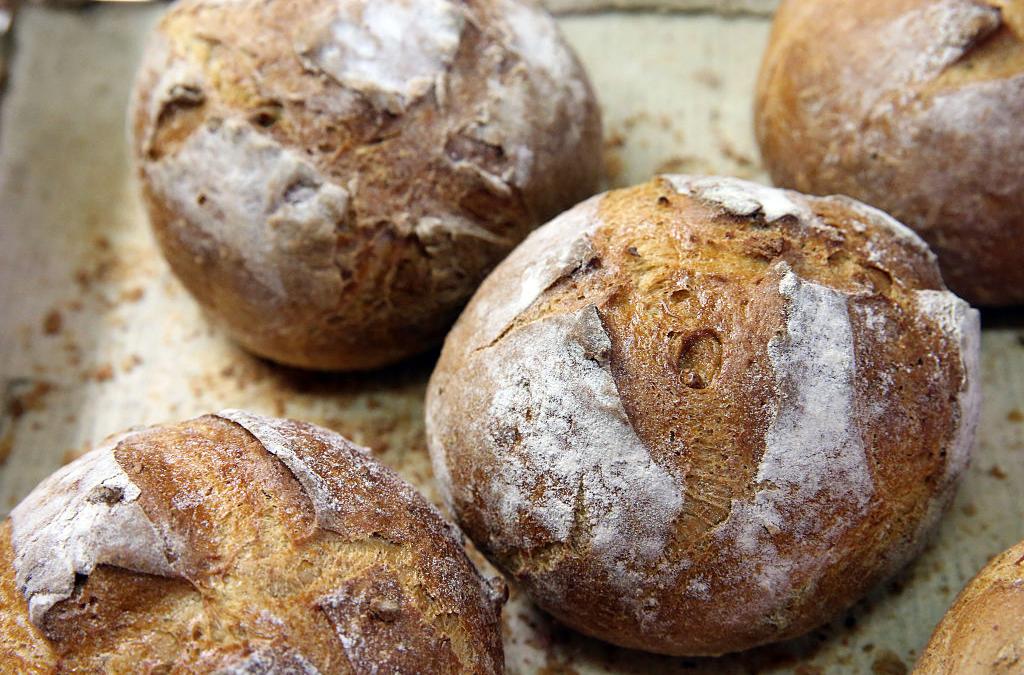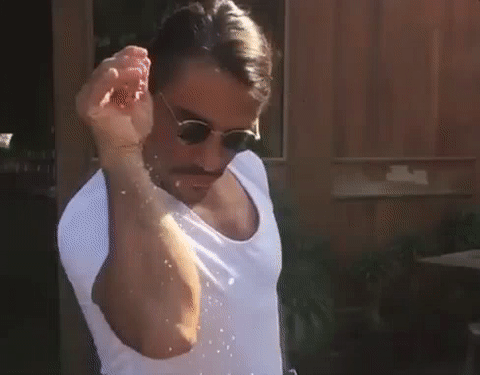
Forget Raymond: Everybody loves salt.

(Sorry.)
Salt is necessary for the human body, and our brains are hardwired to crave it. Our mortal rigs use salt (sodium chloride) to regulate fluids and create nerve impulses. But the bit we all care about is how good salt tastes when you put it in your gob.
It can enhance sweetness, mask metallic or chemical off-notes, round out overall flavour and improve the intensity of other flavours.
And, like almost everything else that brings joy to this unforgiving world, too much of it is bad for you.
It can increase your risk of stroke, heart failure, osteoporosis, stomach cancer and kidney disease. A recent study showed ‘Strayan blokes’ daily salt intake is twice as high as the World Health Organisation recommends.
To reduce blood pressure and lower the risk of heart disease, the Heart Foundation recommends adults eat less than 5g of salt (2000 mg of sodium) a day. That’s less than a teaspoon.
You might be health-woke enough to know you shouldn’t be grinding a tonne of it onto your dinner, but that won’t safeguard you against how much salt is hidden in everyday foodstuffs. Even seemingly healthy ones.
Here are some of the most salty offenders and how to sidestep ’em like a umami-karate-chopping king and/or queen.
SOY SAUCE
That generous pour of soy you’re tipping into your healthy weekday stir fry? Not ideal.
The Chinese condiment is made from a fermented paste of soybeans, roasted grain and brine, and one tablespoon of it typically contains about 1,000 milligrams of sodium — nearly half of the recommended limit for sodium intake in an entire day.
Subbing soy sauce out of your diet entirely is hard since the flavour is so recognisable. Instead, lower your intake. If you’re using soy in stir fries, sub half for water. Otherwise, check out ‘less sodium’ varieties.
BREAD
https://www.instagram.com/p/91h1jMHjiE/?taken-by=woodfrogbakery
We love our bread, we love our butter, but most of all we love… our bread.
Bread’s delicious but boy does it get a bad wrap. Many people limit their bread intake because of the carbs and refined grains, but the salt content in your average slice is the real Least Valuable Player.
According to a recent study by the George Institute for Global Health, a single slice of bread can contain more salt than a single serving packet of Kettle sea salt chips.
And it’s not necessarily the white variety that’s the worst for you. Researchers looked at over 1400 types of bread, including (but not limited to) fruit, multigrain, rye and linseed and found that salt content varied according to brand. Schwob’s Dark Rye was the worst offender, loading 1.7g of salt per 100g, or 1.2g per 70g slice.
So to avoid a morning toast saltsplosion, it’s important to look at the nutrition label on your loaf, keeping in mind that one teaspoon of salt a day is the recommended upper limit. (This handy comparison website might help you choose.)
COTTAGE CHEESE
Cottage cheese has been long lauded as a lighter alternative to headier varieties of cheese.
The soft, lumpy white cheese is made from the curds of skimmed milk, it’s rich in protein, relatively low in fat, and high in calcium, B vitamins, and vitamin A. What else is it rich in?
You guessed it, salt.
Take a walk down the chilled aisle of your local supermarket and you’ll notice many brands contain anywhere from 350 to 500 milligrams of sodium per 1/2 cup. Given a cup of milk contains 100mg of sodium, and it takes 16 cups of milk to make around 500g of cottage cheese, the salt adds up. And that’s excluding what they add at the end.
Luckily, there are low-sodium alternatives out there. Salt-reduced or no-salt-added varieties are a dime a dozen and can be used as a filling spread in sangas, for toppings on a cheeky weekend bagel or as an element of a delish salad.
CEREAL
Your morning bowl of crunch is probably a secret salt bomb. And we’re not referring to the obvious culprits à la Cocopops and Fruit Loops – many ‘heathy’ alternatives are packed with the stuff.
Ideally, the breakfast nosh you choose should have 400mg sodium per 100g or less.
Sanitarium Weet-Bix Hi Bran, Uncle Tobys VitaBrits, Kellogg’s Nutri-Grain and basically every brand’s Corn Flakes (Woolworths, Coles, Aldi, Sanatarium, Black&Gold and Norganic’s) all tip the salt scales, containing 400mg (or more) per 100g.
If you’re really looking to cut down your sodium intake first thing, check out varieties that call themselves ‘low sodium’, as they must have 120mg of sodium or less per 100g.
Coles Simply Gluten Free Corn Flakes, Freedom Foods Active Balance Buckwheat & Quinoa, Freedom Foods Active Balance Multigrain & Cranberry, Kez’s Free Gluten Free Cereal Original and Coles Bran Flakes Raisins, Walnuts & Maple Syrup all have less than 120mg sodium per 100g, and they all have a health star rating of 4.5 or above.
SAUSAGES
https://www.instagram.com/p/BhSz9bPAoM-/?tagged=bunningssnag
Ahhh, the humble snag.
We all know sausages aren’t a health food per say, but these sacks o’ barbecued deliciousness are not ideal salt-wise.
New research shows ‘Strayans scoff down a whopping 1.1 billion saussies a year, with nearly half our recommended daily salt intake contained in a single sausage with a lashing of tomato sauce in bread.
Again, the hardworking folk at the George Institute for Global Health conducted a thorough study that analysed the salt level in more than 1,000 processed meats from Australia’s four major supermarkets from 2010 to 2017.
They found that while some meats had reduced in salt levels over that time, there had been no changes in sausages. When you consider the fact that the average Aussie eats 44 sausages a year (totalling 16 teaspoons of salt), that’s a worry.
So if you’re putting a barbie on this weekend, have your snags but consider subbing in other foodstuffs, like chicken and veggies skewers.
But Bunnings if you’re reading this, don’t you go getting any crazy ideas. Your snags are worth every gram of the good stuff and we salute you.
AAMI Health Insurance sponsors this page.
AAMI Health Insurance is issued by nib health funds limited ABN 83 000 124 381 (nib) a registered private health insurer and is arranged by Suncorp Insurance Ventures as an authorised agent of nib for which it receives commission.



